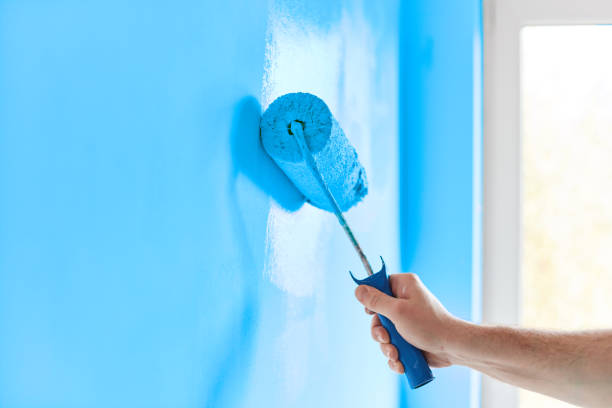
- Share recipes or methods for creating homemade paints from natural ingredients for those looking to take a hands-on approach to their eco-friendly painting project.
Posted by on 2024-01-10
Creating homemade paints using natural ingredients is a rewarding and eco-friendly endeavor that allows artists and DIY enthusiasts to engage with their craft at the most fundamental level. By sourcing materials from nature or utilizing common household items, one can concoct a palette of vibrant, non-toxic hues. This essay explores unconventional methods and recipes for crafting your own artisanal paints, emphasizing the joy found in embracing an earth-conscious approach to artistry.
One intriguing recipe for homemade paint involves the use of berries. Berries like blueberries, raspberries, and blackberries offer rich pigments that are perfect for watercolor-like applications. To start, one must mash the chosen berries into a pulp, strain the juice to remove seeds or skin, and then mix this colored liquid with a binder such as egg yolk or cornstarch. The result is a delightful berry paint that not only provides beautiful color but also emits a pleasant fruity aroma during application.
Another method utilizes spices such as turmeric or paprika to achieve vivid yellows and warm reds respectively. For these spice-based paints, mix the powdered spice with just enough water to create a paste before incorporating a binding agent like gum Arabic—a substance derived from acacia trees which provides consistency and glossiness similar to traditional store-bought paints.
Earth pigments present another avenue for creating environmentally friendly paints; these naturally occurring minerals can be sourced from various locations around the globe. One could collect soil or clay samples of different colors—ranging from ochre yellow to burnt sienna—and grind them into fine powders using a mortar and pestle. These powders are then mixed with binders such as linseed oil (for oil paint) or casein (a protein found in milk) for tempera paint.
For those seeking simplicity, chalk can serve as an excellent source of pigment when making paint at home. Ground into powder form and combined with water and honey—which acts both as binder and preservative—chalk creates opaque pastel shades ideal for various painting projects.
Beetroot yields yet another surprising source of color: its deep magenta tones make it suitable for crafting homemade ink or dye. Boil beetroot chunks until the water becomes concentrated with color; this liquid can then be thickened with gelatin (for more viscosity) if desired.
Lastly, coffee grounds showcase versatility beyond their aromatic morning ritual by offering rich brown tones reminiscent of umber when used in homemade paint preparation. Mixed with egg whites—which act as both binder and drying agent—the resulting mixture provides an organic sepia effect perfect for monochromatic themes or antiquing techniques.
In conclusion, making your own natural paints encourages creativity while fostering sustainability—it's an intimate process whereby each ingredient is carefully selected based on its environmental impact and contribution to overall chromatic harmony. Engaging in this ancient practice not only connects us more deeply with our artistic expressions but also instills respect for our planet through conscious consumption choices within our artistic pursuits.
One intriguing recipe for homemade paint involves the use of berries. Berries like blueberries, raspberries, and blackberries offer rich pigments that are perfect for watercolor-like applications. To start, one must mash the chosen berries into a pulp, strain the juice to remove seeds or skin, and then mix this colored liquid with a binder such as egg yolk or cornstarch. The result is a delightful berry paint that not only provides beautiful color but also emits a pleasant fruity aroma during application.
Another method utilizes spices such as turmeric or paprika to achieve vivid yellows and warm reds respectively. For these spice-based paints, mix the powdered spice with just enough water to create a paste before incorporating a binding agent like gum Arabic—a substance derived from acacia trees which provides consistency and glossiness similar to traditional store-bought paints.
Earth pigments present another avenue for creating environmentally friendly paints; these naturally occurring minerals can be sourced from various locations around the globe. One could collect soil or clay samples of different colors—ranging from ochre yellow to burnt sienna—and grind them into fine powders using a mortar and pestle. These powders are then mixed with binders such as linseed oil (for oil paint) or casein (a protein found in milk) for tempera paint.
For those seeking simplicity, chalk can serve as an excellent source of pigment when making paint at home. Ground into powder form and combined with water and honey—which acts both as binder and preservative—chalk creates opaque pastel shades ideal for various painting projects.
Beetroot yields yet another surprising source of color: its deep magenta tones make it suitable for crafting homemade ink or dye. Boil beetroot chunks until the water becomes concentrated with color; this liquid can then be thickened with gelatin (for more viscosity) if desired.
Lastly, coffee grounds showcase versatility beyond their aromatic morning ritual by offering rich brown tones reminiscent of umber when used in homemade paint preparation. Mixed with egg whites—which act as both binder and drying agent—the resulting mixture provides an organic sepia effect perfect for monochromatic themes or antiquing techniques.
In conclusion, making your own natural paints encourages creativity while fostering sustainability—it's an intimate process whereby each ingredient is carefully selected based on its environmental impact and contribution to overall chromatic harmony. Engaging in this ancient practice not only connects us more deeply with our artistic expressions but also instills respect for our planet through conscious consumption choices within our artistic pursuits.